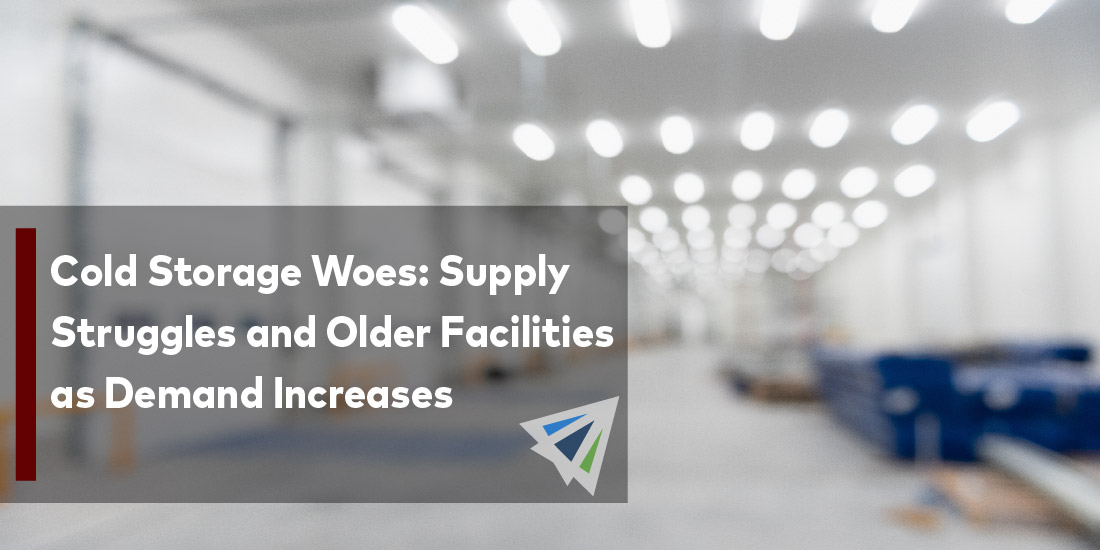The cold chain is experiencing more demand and with that growth, supply is being outpaced, as cold storage warehousing in the U.S. struggles to keep up with demand.
More than 70 percent of the existing units are too old to be ‘energy efficient’ and those old assets are not enticing to investors, as the upkeep can be an unneeded burden.
More Cold Storage Developments
“We are way behind the curve on adequate efficient capacity for cold storage,” Todd Steffen, Executive Vice President at Colliers told the Journal of Commerce.
The process for new cold storage facilities to be built takes around two years. Additionally, construction costs are around $200-300 per square foot whereas dry warehousing is typically around $70-100 per square foot.
Grocery trends have been influencing new construction, as U.S. frozen food sales in 2022 reached over $72 billion – an increase of over 23 percent since 2019.
Big name companies such as General Mills and Nestle are seeing the value in frozen foods and are continuing to invest millions of dollars into frozen food factories and operations.
The overall market for cold storage in the U.S is expected to reach over $330 billion by 2030, doubling the current value of around $140 billion, according to a real estate consulting firm in the food industry.
Additionally, JAXPORT is readily and largely equipped for fresh and frozen cargo, with more than 1,600 reefer plugs on terminals, and 30 million cubic feet of temperature-controlled warehousing with 100,000+ pallet positions throughout the region.
Looking Ahead
Should you have any questions regarding this and how it could impact your shipments, please reach out to our team today.
Additionally, we have our weekly market updates that can provide you with relevant freight news, updates, developments across the industry, and more.
